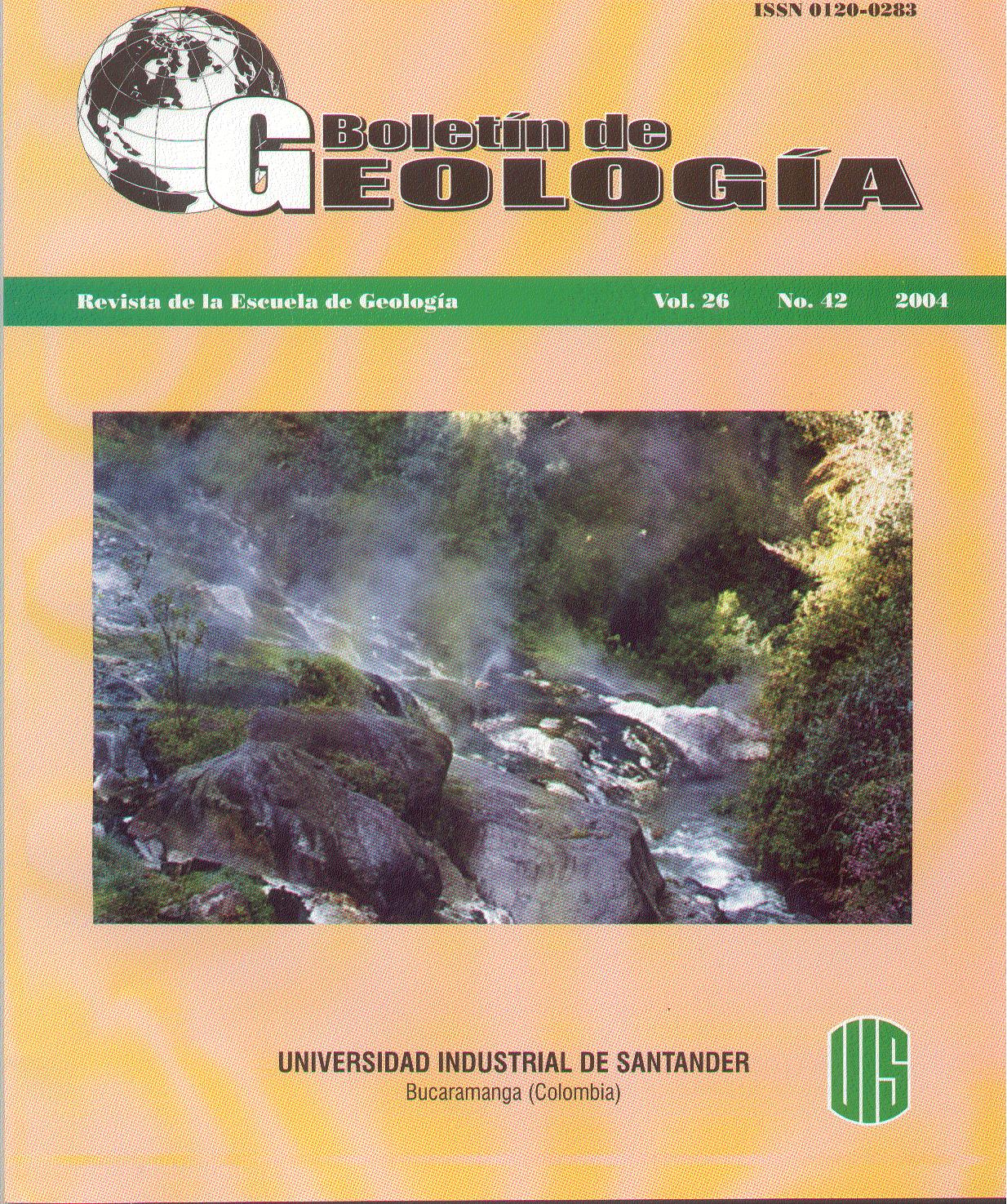Published 2004-03-25
Keywords
- Metagabro,
- Petrography,
- Geochemistry,
- Ophiolite
How to Cite
Abstract
In this study, appears the first analytical results of major elements, trace and rare earth of the protomilonitas of the Stock Chinchiná-Santa Rosa, it is in the Western flank of the Central belt, between the faults Silvia-Pijao, eastwards and Cauca-Almaguer, on the west. The geochemistry characterization in the rocks that they formed in the Stock indicates that this one belongs to the subalkaline series with character toleítico and they are clasified like gabbros and madaly as metagabbro that change according to the grade of deformation between the cataclasites and the milonites. Tectonic discrimination diagrams, allowed to establish that the generation of intrusive body in an dominion distensive of dorsal oceanic type N-MORB; the identification of this environment will allow to set this body in a geotectonic position, forming a part of a complex ophiolitic.
Downloads
References
Alvarez, J. (1987). Serpentinitas y epidota-anfibolita deItuango, Departamento de Antioquia. Ingeominas, Bol.Geol; Vol. 28, No.3, pp. 1-120
Alvarez, J. (1995). Geología del Complejo Ofiolítico dePácora y secuencias relacionadas de Arcos de Islas(Complejo Quebradagrande), Colombia. Ingeominas, Bol.Geol; Vol. 35, No.(1), pp. 1-66
Cortesogno, L., Gaggero, L., Zanetti, A. (2000). Rareearth and trace elements in igneous and high- temperaturemetamorphic minerals of oceanic gabbros (Mark area,Mid-atlantic rigde). Contribution to Mineral Petrology,Vol. 139, pp. 373-393
Cox. K. G., Bell. J. D., Pankurst. R. J. (1979). Theinterpretation of igneuos rocks. Unwin hyman Ltd.,London ,450p.FIGURA 12. Diagrama de Zr/Y-Zr (ppm) donde las rocas analizadasse localizan predominantemente en el campo que comparten las ro-cas de dorsal tipo MORB y las rocas de arco de islas. WPB, rocasintraplaca. IAT, rocas de arco de islas.
Estrada, J. J., Viana, R., G, H. (2001). Geología de laplancha 205 Chichiná, escala 1:10000: Memoriaexplicativa. Ingeominas, Bogotá, 87p.González, H. (1980). Geología de las planchas 167(Sonsón) y 187 (Salamina). Ingeominas, Bol. Geol; Vol.23, No.(1),pp.1-174.
González, H. (1993). Mapa geológico del departamentode Caldas. Escala 1:250.000. Memoria explicativa.Ingeominas. Santafé de Bogotá.Higgins, M.W. (1971). Cataclastic Rocks. USGS Prof.Paper, 687p
Irvine, T. N. and Baragar, W. R. A. (1971). A guide tothe chemical classification of the common volcanic rock.Canadian Journal of Earth Science,Vol. 8, pp. 523-548
McCourt, W., Aspden, J., Brook (1984). New geologicaland geochronological date from de Colombian Andes:Continental growth by multiple acretion. Journal GeologySoc., London. Vol.141, pp.831-845
Meschede, M. (1986). A method of discriminationbetween different types of mid-ocean rigde basalts andcontinental tholeiites Wit the Nb- Zr – Y diagram.Chemical Geology. Vol. 56, pp. 207-218
Mosquera, D. (1978). Geología del Cuadrángulo K-8.Ingeominas, Informe 1763, Bogotá, 63p
Nakamura, N. (1974). Determination of REE, Ba, Mg,Na, and K in carbonaceos and ordinary chondrites.Geochemical, Cosmochimical Acta, Vol.38, pp.757-775
Nivia, A., Marriner, G., Kerr, A. (1996). El ComplejoQuebradagrande una posible cuenca marginalintracratónica del Cretácico Inferior de la CordilleraCentral de los Andes Colombianos. VII Congre. Col.Geol; Mem. Santafé de Bogotá
Pardo, A., Moreno, M., y Gómez, A. de J. (1999).Estudio de nuevas localidades fosilíferas en las CordillerasCentral y Occidental de Colombia, Universidad de Caldas.Centro de Investigaciones y Desarrollo Científico(CIDC), 72 p. Informe
Pearce, J. A. (1982). Trace element characteristics oflavas from destructive plate boundaries. In: Thorpr. R.S. (ed), Andesites. Wiley, Chichester,pp.525-548
